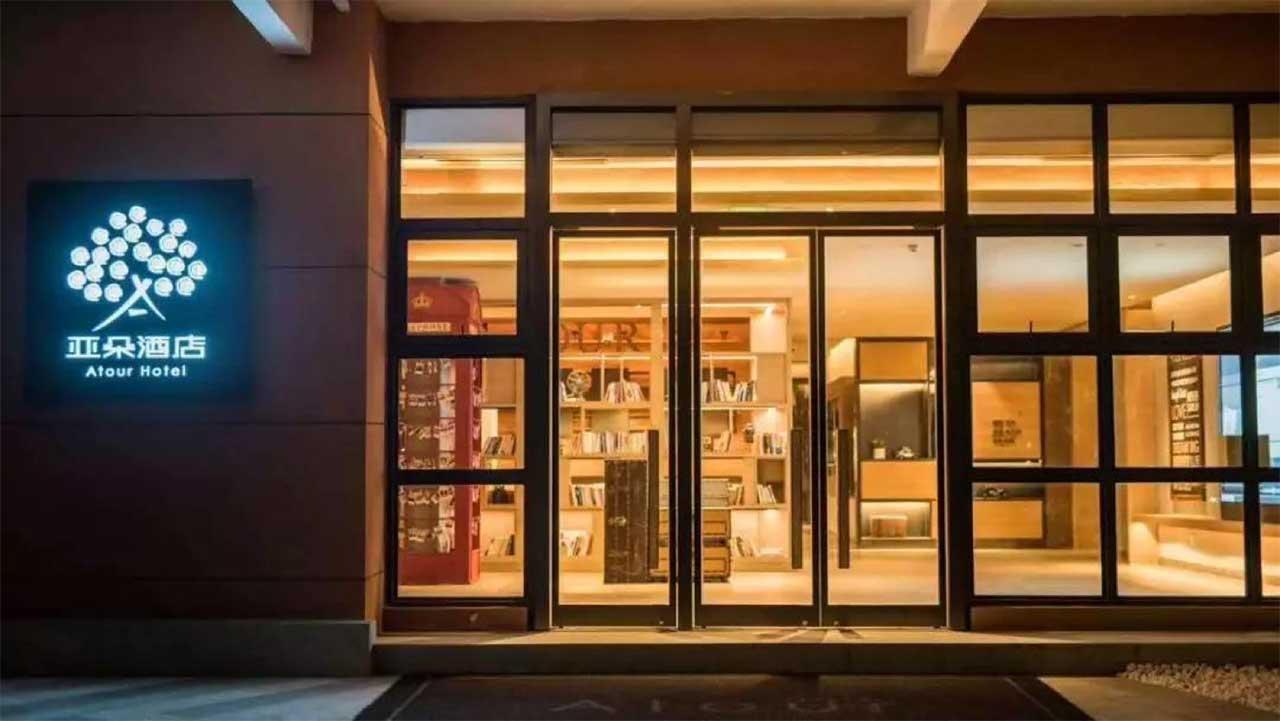China Hotel Association data shows that the growth rate in terms of hotel room numbers in the limited-service chain hotels nationwide reached its peak in 2005 at 200%. Since then growth has slowed, falling below 30% in 2013, and below 15% by 2016 and 2017. While these statistics do not give justice to supply in the hospitality industry as a whole, they do reflect a shift from rapid expansion to steady development.
Since its first opening in Xi’an in July 2013, Atour hotels have entered 150 cities across China, and have 300 hotels and over 18 million members on their books. Although a latecomer, Atour has captured significant demand from frequent business travellers and the emerging middle classes. How? By positioning itself as a hotel chain of culture, and offering services that exceed expectation. Fired up by online popularity, Atour has chosen to differentiate in a state-dominated sector and has succeeded in scaling up rapidly.
Behind this rapid development is growth in demand for mid-range hotels: those with a good price for performance ratio, that chime with the current domestic consumption upgrade trend. In the past fifteen years, mid-range hotels have been a comparatively slow burner. Business hotels have grabbed much of the market with their three-pronged “location, price and standards” criteria, quickly becoming massive nationwide chains. But in the course of expansion, low costs have had an impact on quality, and business travellers who pursue high quality services when travelling have been affected. And while high-end hotels have a clear quality threshold, their high costs turn most guests away at the door. Contrasting with both, mid-range hotel had a good year in 2013, seeing opportunities and securing capital market attention. This was partly because of timing: they launched just as consumer markets were undergoing an upgrade, and partly because investors saw in them higher levels of profitability and RevPAR (revenue for renting rooms). In terms of average efficiency and staff efficiency, they have an advantage over high-end hotels. In an industry still lacking basic investment, there is still a strong return for investors with capital to burn. Zooming in to the mid-range hotel sector, some established business hotels have relied on their own property network to “upgrade and transform” their mid-range offerings, and some international hotel brands have given their mid-range brands over to local management franchisees. In contrast, Atour represents a brand that has grown from the bottom up. Its stategy is supported by the notion that they are “better than the rest, so might as well be different.”
When it began in 2013, Atour wanted to be a people’s brand, benchmarking Starbucks’ “third space” concept and breaking away from the basic hotel “room renting” focus in an effort to prioritize cultural use of space. An example is printing the best photos its guests take on its hotel room walls. Hotel lobbies are open day and night, books can be borrowed and returned at any branch. Schemes such as these attracted the first group of hotel users. Atour emphasizes personalization as standard when it comes to service. It has broken down the stay cycle into 12 nodes, from first check in right through to next check in. Front-line staff are authorized to offer a set of personalized soft services at each node. Individualized standards are balanced with service efficiency. In terms of market entry strategy, Atour chose to start in the west of China and in the country’s second-tier cities. Cities such as Xi’an and Chongqing are not yet saturated by business hotel chains. After gaining influence, Atour will move into eastern and southern China as well as the capital, all already full of strong brands.
After raising USD 100 million from its series C funding round and receiving 400 million RMB in bank credit, Atour has enough ammunition to enter its key development phase and deploy in two directions.
Direction one uses the core logic of expanding to encompass the whole network. Scaling up does not just mean opening new hotels, but also targeting subsidiary consumer needs. The strategy includes Atour Light (social hotels), longer stay apartments, holiday projects and package resorts, horizontally widening the space in which Atour operates. This is the “horizontal axis” of the Atour model.
Direction two uses the core logic of strengthening brand image and enhancing brand value, focusing on various “non-accommodation needs” beyond hotel bookings, introducing third party resources on the Atour platform, and deploying B2C e-commerce to offer value-adds such as consumer finance and local tourism services, vertically enrich the content space. Atour’s main goal is creating an IP hotel via cross service cooperation. The IP hotel model aimed to strenthen connections between Atour and other IP across the board via themed rooms. Atour hotels’ public spaces will feature offline IP displays, and hotels aim to attract independent brands to add value. In November 2016, Atour worked with Fudan professor Wu Xiaobo to launch the Atour·Wu Hotel. Atour hs worked with at least 10 independent brands including Zhihu, Netease Cloud Music, Tencent QQ Super VIP, and the immersive drama “Sleep No More”. These IP hotels have increased Atour’s RevPAR by about 20%. This is the “vertical axis” of the Atour model.
Horizontally and vertically, Atour is at the initial stage of exploring ways to realize value on the platform beyond its group of regular staying guests. For internet companies, a platform that has accumulated a degree of network effect often seeks retail realization. The retail scene based on accommodation space is now within sight for Atour, and is providing its first non-stay business opportunities. In this regard, founder and CEO Ye Luyin says that Atour is an important portal for the offline product experience. The connection between people, goods and venue can be reconfigured in Atour hotels acting as new retail spaces. Atour does not produce its own products or get involved in logistics. It only provides a trading platform. Its offerings are things such as suitcases, travel pillows and cosmetics sets designed to fit in with Atour branding. At present, non-stay business accounts for about 20% of Atour’s overall revenue, and is managed by a 60-person “X BU” team within the company.
How is the internet most involved in Atour’s model? With its crowdfunding investment strategy. Atour welcomes small investments (ranging between 10,000-100,000 RMB), in return for which dividends are offered. Interestingly, a significant number of these investors are also consumers. Dual identity investors solve the hotel chain’s funding issues, while more importantly bind users to the platform, increasing stickiness. This makes Atour customers the most active word-of-mouth communicator on the platform.
Ultimately, no matter how much room there is for imagination, in the long run, Atour still needs to pay attention to maintaining its “horizontal axis” competitive advantages. Returning to the heart of the hotel industry, the key success factor for a chain hotel is still its “positioning” in business circles. This makes hotels a high CAPEX (capital expenditure) kind of project. Brands often rely on the franchise model and Atour cannot avoid this reality. As the mid-range hotel sector starts getting crowded, Atour lacks the brand awareness and franchisee service output capability needed to win over local franchisees. How to further consolidate its back-end capabilities while implementing its cultural program, IP aspirations and new retail plans all at the same time? In the end, whether or not Atour’s dreams come true comes down to profitability of the hotel industry itself.













